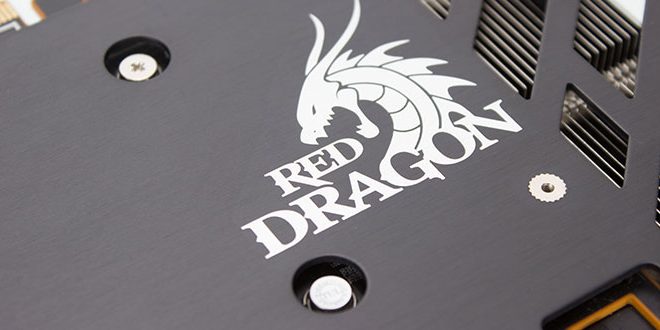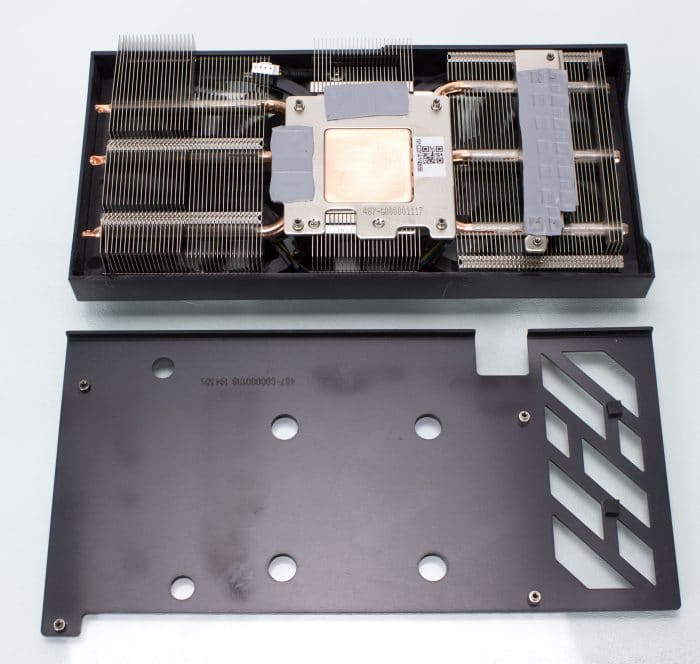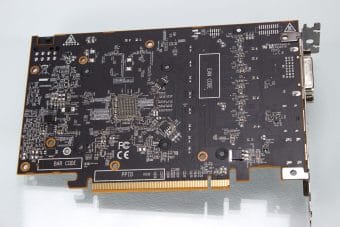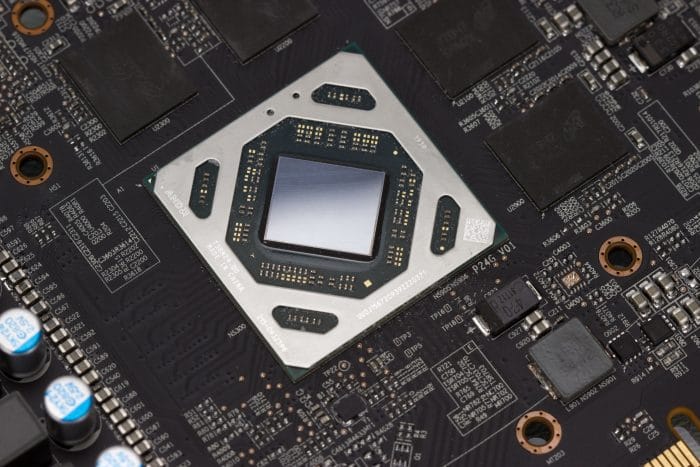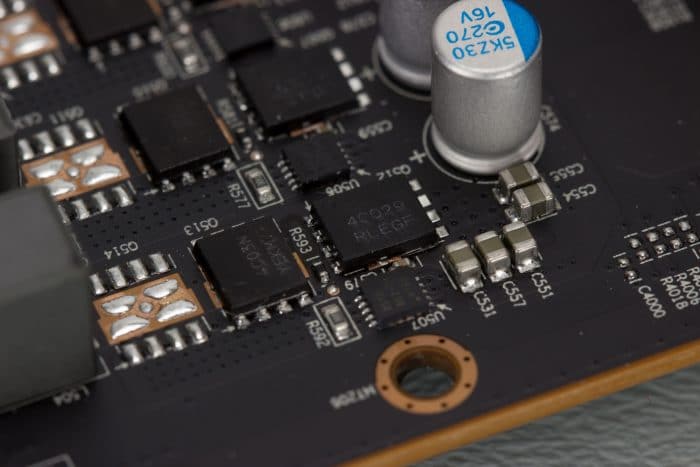What’s under the cooler and embellishments of the Red Devil 5500XT?
The Red Devil RX 5500 XT cooler is a fairly standard affair with a large copper cold plate that connects to the three large heatpipes to wick heat away from the GPU into the fin stack. There is also a metal plate that is used for cooling the memory surrounding the GPU. Toward the rear, I/O area is where you find the VRM and its associated cooling plate.
The backplate while it is indeed metal it offers no heat transfer whatsoever and can actually be a heat trap had this been a more powerful card with more waste heat being dumped. That’s not to say the card would not benefit even in its current state with some thermal pads, it would, especially since Pwoercolor went through the expense to make a thick metal backplate which would make a great heat spreader. This is a missed opportunity to have a bit more thermal capability for the rear of the GPU, memory, and VRM.
The PCB for the Red Devil RX 5500 XT is fairly standard for a mainstream card moving the VRM to the I/O side to help make for a more compact overall card. The card uses high and low side fets to power the unit and it is suitable for the application.
Here we have the much smaller 7nm Navi GPU for the RX 5500 XT. This is not simply a 5700 series with features turned off, this is a physically smaller entirely different GPU. This, as mentioned previously means a higher overall yield per wafer for AMD as they can fit almost double the number of dies per wafer.
The memory on our card is Micron labeled D9WZX and is 14,000 MHz effective rated GDDR6. In recent memory, I cannot remember any card I have seen this specific model of memory on, so it will be interesting to see how far it can go. That is, of course, pending that there is no arbitrary limit in the driver keeping it from going higher (this always seems to happen with AMD and requires tweaking via powerplay tables or other methods to open up more headroom via “unofficial overclocking”).
The fets as previously mentioned for the VCore VRM are OnSemi 4C029 for the high side with 4C03N for the low side. The card looks to have 6 phases for VCORE with this arrangement, what looks like a single phase for PCIe slot power and one phase for memory power for the four GDDR6 modules.
We have seen everything there is to see of the Red Dragon 5500XT, now let’s take a look at how it performs.
 Bjorn3D.com Bjorn3d.com – Satisfying Your Daily Tech Cravings Since 1996
Bjorn3D.com Bjorn3d.com – Satisfying Your Daily Tech Cravings Since 1996
